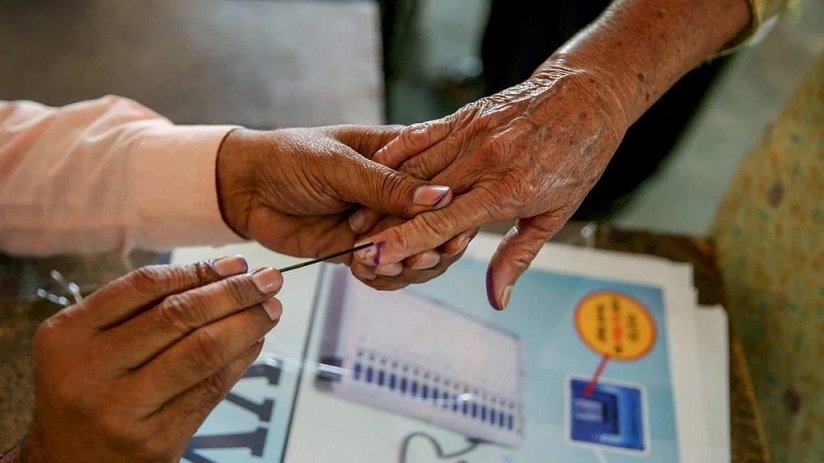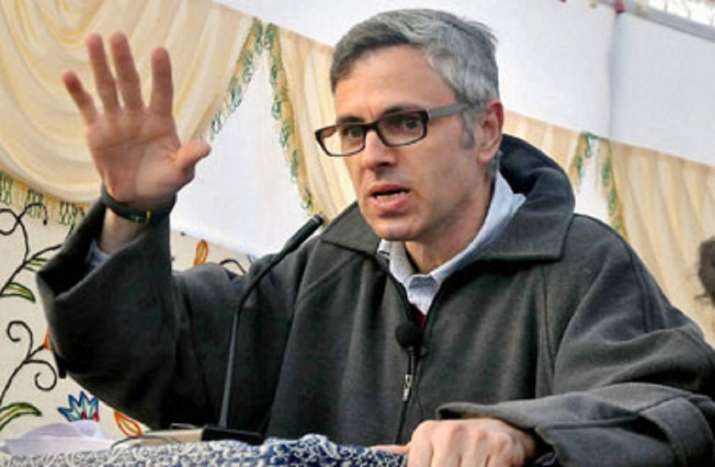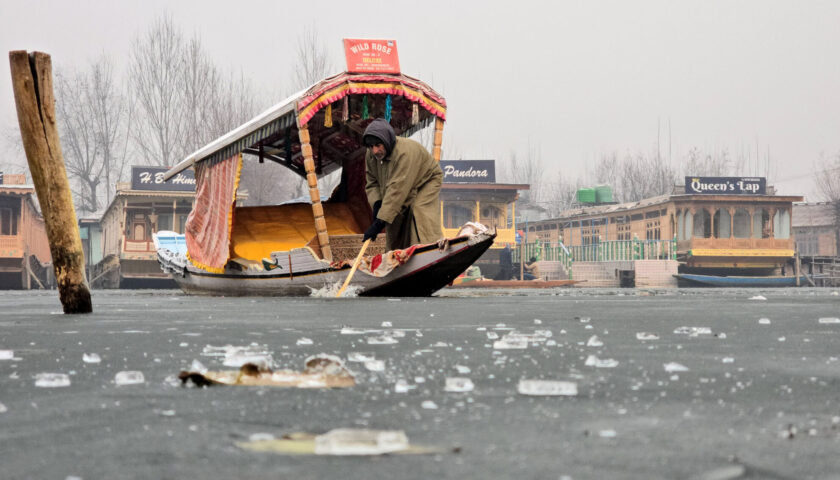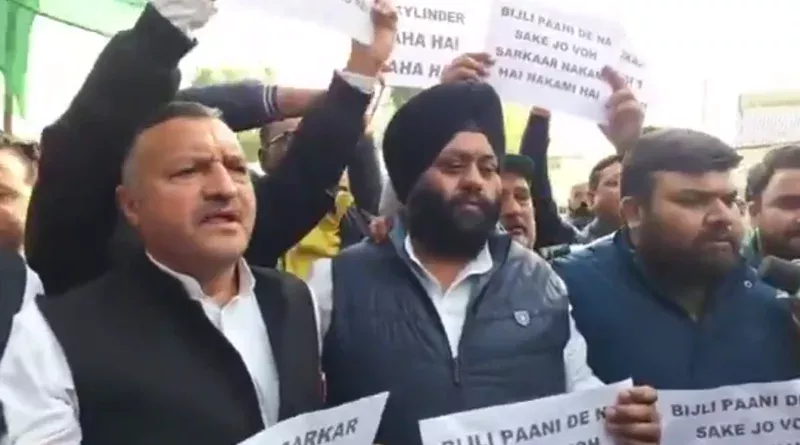2.23 Lakh Voters to Decide Fate of 27 Candidates in Nagrota and Budgam Bypolls
By: Javid Amin | 10 November 2025
As Jammu & Kashmir heads into a politically charged bypoll day, over 2.23 lakh voters across the Nagrota (Jammu region) and Budgam (Kashmir region) constituencies are set to decide the fate of 27 candidates contesting in what many see as a mini-referendum on regional party strength post the 2024 Assembly elections.
The bypolls, being held today under tight security arrangements, are significant not just for filling vacant seats but also for gauging public sentiment across two regions with distinct political dynamics.
Bypoll at a Glance
| Constituency | Region | Registered Voters | Candidates | Key Contenders |
|---|---|---|---|---|
| Nagrota | Jammu | 97,980 | 10 | Devyani Rana (BJP), Shamima Begum (NC), Harsh Dev Singh (Panthers Party) |
| Budgam | Central Kashmir | 1,26,000 | 17 | Candidates from NC, PDP, Apni Party, and independents |
Nagrota: BJP’s Stronghold Faces Renewed Challenge
The Nagrota constituency, located in the Jammu region, has traditionally been a BJP bastion. However, this bypoll introduces a new emotional dimension following the death of sitting MLA Devender Singh Rana in October 2024.
His daughter, Devyani Rana, is contesting as the BJP candidate, seeking to inherit her father’s legacy while appealing to younger voters. Her campaign has emphasized continuity in development, women’s empowerment, and infrastructure projects initiated by her late father.
Key Contenders in Nagrota
-
Devyani Rana (BJP) – banking on legacy and continuity
-
Shamima Begum (NC) – DDC member representing a rural outreach and welfare-driven campaign
-
Harsh Dev Singh (Panthers Party) – former education minister and vocal regional leader advocating Jammu-centric governance
Local Mood
Voters in Nagrota express mixed sentiments — while developmental continuity under the BJP appeals to many, others voice concern over unemployment and uneven regional focus. The Panthers Party is hoping to capitalize on this discontent, while the National Conference (NC) aims to test its Jammu foothold.
Budgam: Political Pulse of Central Kashmir
In contrast, Budgam’s bypoll carries heavy symbolic weight in central Kashmir, a region that has witnessed shifting alliances, evolving voter patterns, and increased political participation since the restoration of J&K’s statehood debate gained momentum.
With 17 candidates in the fray, the seat has drawn attention for its fragmented contest, featuring candidates from National Conference (NC), People’s Democratic Party (PDP), Jammu & Kashmir Apni Party, and independent aspirants.
Political Stakes
-
The National Conference, led by Omar Abdullah, views Budgam as an opportunity to reaffirm its central Kashmir dominance.
-
The PDP, once strong in the region, seeks a resurgence after its electoral setbacks in 2024.
-
The Apni Party is positioning itself as a development-first alternative, appealing to young voters tired of traditional party politics.
Security and Turnout
Given Budgam’s strategic location near Srinagar, authorities have deployed additional security personnel, set up monitoring drones, and established checkpoint coordination with district administration.
Early reports suggest steady voter turnout despite morning chill — signaling an increasing re-engagement of Kashmiris with the electoral process.
Why These Bypolls Matter
These elections are being widely viewed as a litmus test for major parties — the BJP and National Conference (NC) — and as a pulse-check on public opinion in the Union Territory.
The Nagrota bypoll will determine if BJP can retain its urban-rural blend of influence in the Jammu belt, while Budgam’s outcome will reveal whether NC and PDP can reassert control in Kashmir’s heartland amid rising competition from newer political forces.
Moreover, analysts believe the results will set the tone for the 2026 local body elections and influence future alliances in J&K politics.
“These bypolls may be limited in scale, but their symbolism is significant — they test emotional legacy, regional balance, and post-2024 political narratives,”
says a senior political observer from Jammu University.
Post-370 Political Dynamics
The Nagrota and Budgam contests also underscore J&K’s evolving post-Article 370 political fabric.
-
In Jammu, the BJP continues to project itself as the flag-bearer of integration and stability, focusing on infrastructure, tourism, and investment.
-
In Kashmir, regional parties are recalibrating their positions around governance, youth employment, and restoration of confidence in democratic processes.
The by-elections thus reflect more than just seat counts — they mirror how regional identity, governance models, and emotional politics coexist in a transitioning Jammu & Kashmir.
Polling Day & What Comes Next
Polling began early on November 11, 2025, with tight security, CCTV surveillance, and EVM transparency protocols in place.
Authorities reported peaceful polling conditions in both constituencies as of mid-day, with encouraging participation from first-time voters and women.
The counting of votes is scheduled later this week, and results are expected to offer:
-
A snapshot of regional power balance
-
Insights into voter turnout patterns post-2024
-
Indications of which narratives — development, identity, or governance — resonate most with the public
Key Contestants:
Devyani Rana (Bharatiya Janata Party – Nagrota)
Bottom-Line: A Mini Mandate for J&K’s Political Future
While only two constituencies are at stake, the Nagrota and Budgam bypolls hold outsized political significance. They test the resilience of traditional parties, the appeal of new regional forces, and the trust of the electorate in the evolving democratic setup of Jammu & Kashmir.
As 2.23 lakh voters cast their ballots, both regions — Jammu and Kashmir — are once again at the intersection of continuity and change.
The results, beyond the numbers, will tell a larger story: Is J&K ready for a new political equilibrium — or does legacy still lead the way?




